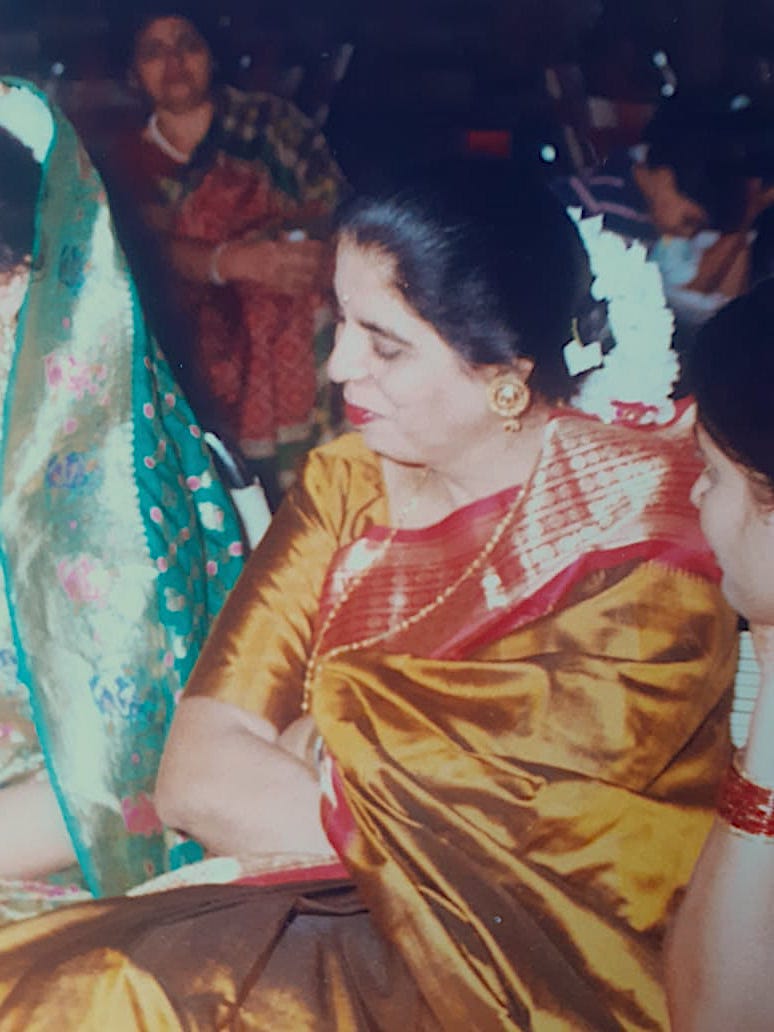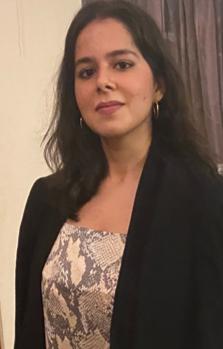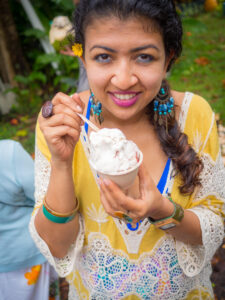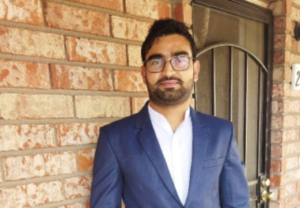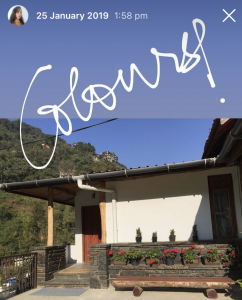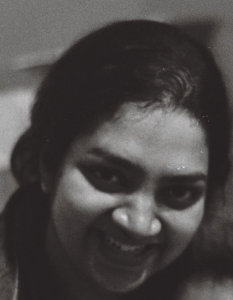Four Thousand Miles Away, a Book and a French Girl Banished My Daughter’s Loneliness
Anita Vijayakumar
“Mais ce qu’il desirait pardessus tout, c’etait…du chocolat.”
The alluring lilt of French words wafted from under my eleven year old daughter’s forever-shut bedroom door. Two sets of high-pitched giggles followed. It was April 2020 and we were in the midst of a worldwide pandemic. Who the heck was in Anya’s room? And why was she speaking French?
The doorknob squealed as I turned it. I slowly poked my nose in, followed closely by my right eye. My stash of Ferrero Rocher, now mostly wrappers, littered Anya’s desk. Her fingers in her hair, her toes rapping against the wood floor, she alternated between staring at a book nearly buried in wrappers and the iPad propped up in front of her. From the screen, a girl with tight blonde curls waved a Snickers bar like a conductor’s baton, encouraging her to continue. Anya bent her head closer to the book and translated. “But…what he wanted…above all was…chocolate.”
“Bien!” the girl cried, then sank her teeth into the Snickers. Ah, I thought, a Zoom meeting. Like a turtle tucking in for the night, I retracted my head, but the girl had spotted me. “Bonjour, la maman de Anya!” she exclaimed. A string of caramel hung from her chin.
I stalled. I hadn’t met any of Anya’s new classmates. Didn’t even know their names. I looked closer at the girl. Bright blue eyes peered out of olive skin. A gold pendant inscribed with calligraphy dangled like a suspended waterfall from her neck: Camille.

Of course! How had I forgotten? The French speaker was Anya’s friend Cami, an 11-year-old who lived in the small town of Sautron, France, four thousand miles away. The girls were struggling through French-English copies of Charlie and the Chocolate Factory and laughing, trying to forget for a moment that outside their windows, the world was sad and still.
But here was the catch: even though the girls had been friends for half their lives, they couldn’t talk to each other. They didn’t know how.
Just eight months earlier, our family moved from Milwaukee to Chicago and Camille’s family moved from Paris to Sautron. After the lockdowns began, the fledgling friendships they’d each begun in their new schools weakened. Text messages dwindled. Neighborhood kids stayed indoors. Their cross-country moves had already shaken the stability of their childhood friendships. The pandemic erased what little was left.
My musical Anya stopped playing the piano. The house no longer hummed with jazz or pop, classical or original compositions. She quit drawing. Paintings on her bedroom walls stopped multiplying. The paints grew hard. My husband bought two paint-by-number kits and asked her to join him. He hadn’t drawn since elementary school. She shook her head.
She laid on her bottom bunk and stared at the wooden slats above her for hours. When I asked how she was, she shrugged, said she was fine. Of course she wasn’t fine. No one was. I heard later that Camille grew quiet. Picked at her food. I could easily imagine what her parents felt on the other side of the Atlantic. At an age when friendships mattered more than almost anything, the girls were desperately lonely. And I could only watch, torn and helpless.
But I had forgotten the courage we muster when we’re young and lonely.
A few months into the lockdowns, Anya and Camille grew tired of being tired. They connected over WhatsApp and opened Google Translate. In a brilliant scheme, they decided to defy the pandemic. Their resolution: to teach each other their native tongues so they could finally talk for real. They ordered their French-English copies of Charlie and the Chocolate Factory and, with the help of Charlie Bucket and my not-so-secret stash of chocolate, began meeting every day.
I was overjoyed, but I’ll be honest: Anya’s interest in French was a sham. These French lessons with Cami required dedication to a language her tongue and nasal passage refused to entertain. She intentionally sang the silent t’s. She refused to concede that nouns needed genders. But there’s a reason my daughter sacrificed her Netflix time to race off to yet another virtual meeting. It wasn’t because of the strict quarantine. It wasn’t so she’d have reason to change out of her pajamas every day. It definitely wasn’t for the French. It was for Cami.
Anya is Indian-American; Camille is Guadeloupean-French. They aren’t part of a school exchange and they have the opposite of a shared culture. For all practical purposes, they should never have crossed paths. For certain, they shouldn’t be friends who’ve explored ruined medieval castles, skipped through Italian villas, and are now laughing over unpronounced French letters and uvular trills. So with an ocean between them and no common words, what’s their connection?
I promise I won’t leave you hanging. But first, let’s backtrack two decades or so, to me.
In high school, I had stuff pretty much figured out. I was the dutiful eldest child of Asian immigrants. I didn’t have any brothers, so I was both son and daughter. The pressure of professional achievement fell on my shoulders, as did the charge of maintaining the family’s honor. I accepted the challenge. I knew no other way. I played violin and tennis, made perfect masala tea for guests, rocked my SATs, and planned my entire career. You know the type. That was me.
It was never enough. In college, I’d sit on the Lake Michigan docks behind Chicago’s Adler Planetarium and imagine I was gazing at the Atlantic Ocean. Somewhere beyond that stretch of shimmering blue-gray, beyond the expectations I was both summoned and called to follow, was my entry into adulthood. In the land of Austen and Keats, I would put my head down and study English literature and become a scholar. I had a vague idea that new friendships could expand my worldview, but at nineteen, I was foolish enough to think that was negligible.
As I shook out my tingling legs and trodded off the plane my junior year, the pilot’s voice boomed: “Welcome to Manchester, England, folks! The weather outside is gray and drizzly, but Manchester United has just had their first win of the season against Charlton Athletic!” I knew nothing about soccer, but the pilot’s excitement was contagious. Exhaustion fell off my body like layers of clothing in a Midwestern Spring. I smiled maniacally at everyone surrounding the luggage carousel. They pulled their suitcases closer.
I marched onto the underground train and got off at Oxford Road, then dragged my suitcase half a mile to a Toblerone-shaped dorm at the University of Manchester. The campus had over forty thousand students and I knew not a soul. Perfect. Homesickness had never afflicted me—not during the first fistful of my life in an Indian village as my parents struggled to save money in Chicago and not after I’d been shipped off to a free boarding school for high school so my father and I didn’t kill each other. England was just another step in my maturation. I winked at my reflection in the cloudy mirror and then, laden with books, I marched into centuries-old classrooms, certain I’d soon be worldly beyond compare.
For weeks, I devoured the classics like they were tubs of peanut butter (which in England, I discovered, are relegated to a tiny shelf in the foreign foods aisle). I was soaking up knowledge and dominating my classes. I interacted with classmates for group projects, but outside of those required meetings, I reveled in the head-down research and hyper-focused studies that a Redbrick university demanded. The pressure of my internal drive was appeased; I was doing exactly what I’d come to do. But when I finally raised my head to breathe, I saw all the seats around me were empty.
I ate alone, studied alone, explored the city alone. Everywhere around me, friendships were burgeoning over fish and chips, but I was going it on my own. While accomplishing the goals I’d thought were so clear, an emptiness had grown without my notice. Even peanut butter didn’t help.
As evening descended over the library one October evening, I swore I heard Jane Austen admonish me from the pages: “If you aren’t going to stretch your wings, dear girl, why did you bother to come?” I’d been called out by a ghost; my entire body stung.
I closed my books. Packed up my half-written essay. Walked back to my dorm, picked up the landline, and dialed someone who’d given me their number.
My loneliness gave me courage. It gave me flight.
It led me to Madalitso, a Zimbabwean girl who showed me firsthand how her African passport was scrutinized at all the borders we crossed; I quickly learned the privilege of being American. Her supermodel impression had us laughing so hard we tumbled off the train in Toledo instead of Madrid during our Winter holidays. Straight out of a Hepburn movie, some townspeople at the station grabbed our bags and insisted we join their parade to celebrate Three Kings Day.
My loneliness led me to Silja, a German girl with emotionally-reserved parents who shared her feelings with me more sincerely than anyone I’d ever met, and accepted mine in return.
And it led me to Jerome, a French guy whose compassion for others inspired me to join him in early morning drizzles, handing out sandwiches at outdoor food pantries while telling each other stories of our wildly different upbringings.
Suddenly, the world expanded. I’d thought words were so fastidious, but these new friends showed me it was the variations in language that mattered. We made allowances for jokes that got muddled in translation. We learned expressions that made us wonder why we’d ever said things differently. I learned Germans say “Close the lid, the monkey is dead” instead of “That’s the end.” I mean, really, how do you top that? We partied and ate and traveled and cried. We trusted each other with truths we’d fiercely guarded.
My common thread with all these new friends was English, but our relationships grew far deeper than the shackles of speech. Somehow, we’d found a pocket of space and time where only rudimentary words were necessary. Often, they weren’t necessary at all. No matter our country, we implicitly understood each other’s longing for relationships that superseded a common culture.
I’d started the year thinking my growth would come from great literature. Then a motley group of kids from random corners of the earth dismantled my well-laid plans. These friends, not literature, grew me up.
When my adventure ended, my most valued possession wasn’t a degree from a venerable institution. It was a folded piece of paper clutched in my hand: a return ticket. A golden ticket, much like Charlie Bucket’s, identical to the tickets my new friends also held. Physical pacts to ensure our friendships wouldn’t end. We were young and idealistic, but we weren’t wrong.
Every year or two, these tickets allowed us to gather in a country someone suggested between pints of Guinness in a Florentine bar or a beer garden in Munich. Our reunions were never fancy—we were still hungry students scraping together money for budget plane tickets and youth hostels—but to us, they were the grandest meetings on earth.
Year by year, significant others got added on and fell off, but the core remained. Year by year, we added layers to our shared stories our parents could never hear. Our rental car in France broke down during a raging thunderstorm so six of us slept in a four-seater Peugeot, elbows and knees everywhere, until the pelting rains gave way to a blazing field of white poppies. We got stranded in a ruined castle in Loch Lomond, Scotland, where the the caretaker fed us roasted fox he’d shot himself an hour before. We met each other’s families through our travels. Through their parents’ home cooking and visits to their siblings’ homes, these people became extensions of ourselves.
“Who is this white man doing Bhangra like us?” my cousins marveled when Jerome danced at my wedding in India, then pulled him into their circle.
Jerome had grown up in Brittany, on the northwest coast of France, where the sharp cliffs hurl into the ocean like granite waterfalls. His town was beautiful, he said, but everyone was just like him. At my wedding, he introduced me to Veronique, a woman he met while volunteering. She was from Guadeloupe, an island shaped like a pair of lungs thrumming in the Caribbean. She had a smile that lit up her face like a coastal morning, then spread outwards. It took his breath away. I loved her from the start.
Now, as promised…
Days after my daughter Anya was born, Veronique brought a wrinkled and gorgeous baby into the world. They named her Camille. When the girls were eight months old, we left Anya with my in-laws to attend Silja’s wedding in Germany; Jerome and Vero brought Cami. I felt guilty for leaving Anya behind until I realized European families drive between countries like I drive to Indiana: half a tank of gas and a favorite playlist.
During the wedding, Vero’s milk supply plummeted. Despondent and without bottles, she asked if I could breastfeed Cami and thus not waste the milk I was pumping and dumping. There was no answer but “Of course, yes!” I held her beautiful olive-skinned baby to my chest, giving her the liquid nourishment I knew my own sweet brown-skinned baby would happily share.
The summer our girls turned six, our families rented a countryside cottage in Italy. The humid August air wet us in the morning and left our bedsheets drenched by the time we crawled in again. As the kids all spoke different languages, Madalitso, Silja, Jerome and I worried how our kids would communicate verbally. We should have known better.
We watched them side-eye each other, then run off, kicking a ball through the sunflower fields. The kids were like magnets. They played clapping games, had tickling wars, collected wildflowers. They spoke loudly, thinking it’d be easier for the others to understand.
“Chat!” “Preso!” “Fangen!”
Permutations of “Tag” in French, Shona, and German weaved through the Tuscan air, mingling with the kids’ squeals. None of them needed a translation. As the saying goes, dirty knees are all the same color. Anya and Cami slept side by side the entire week, murmuring words that maybe the other understood, maybe not.
When we met up again two years later, the kids still couldn’t converse, but the first night’s dinner renewed all their past affection, just like it did with us, now the old folks. As Cami and Anya walked hand-in-hand through the Lascaux caves and kayaked down the Dordogne River, I watched them re-enact a familiar scene: shyly reaching out to people so different and new, forming friendships that would take them on journeys they couldn’t yet imagine.
We were supposed to meet up again in July 2020. We’d found a cheap AirBnB for twenty people off the coast of Portugal. The adults would show off our new gray hairs, the kids would section themselves off and laugh about things we could only guess at. The girls were so excited.
The lockdowns began in March. By April, the pandemic’s heavy curtain had fallen. The world dissolved into a frenzied-turned-silent isolation. Our reunion was canceled, the girls devastated. They were already immersed in solitude and sadness from their moves. This fresh loss made them retreat inwards even more.
Until Charlie and the Chocolate Factory brought them back.
Anya and Cami decided that if they couldn’t see each other in person that summer, they’d meet every day over Zoom and wade through each other’s language until they could. When they met in person again, Anya said, she wanted to do more than play soccer and clapping games. She wanted to tell Cami about her friends and school and hobbies and dreams, and she hoped Cami would do the same.
It’s been over two years now. Over two years of Anya scarfing down her lunch and, seven hours ahead, Cami doing the same with dinner before hurriedly logging on. Two years that I’ve watched my daughter, her face shining, run to her iPad and shrug off her loneliness, not caring if she trips over her words for the next hour. The girls gently correct each other’s pronunciation. They snort when they laugh. Their friendship, so improbable in this dark time, is also their light.
Now their isolation is over and they’re back in school making new friends, but the girls still meet on weekends. Anya plays her keyboard for Cami, throwing in the new jazz riffs she’s learned. Cami sings back, her voice deep and full.
Anya’s not sure how much her French has improved. She jokes that her accent sounds like she’s speaking underwater. But when I hear the giggles coming from behind her door, I know their friendship helped her navigate this pandemic in a way I never could. After their meeting yesterday, I told Anya “Je t’aime” and she said “You’re welcome.” I hid my smile. Maybe the girls haven’t covered “I love you” yet. But honestly, I feel that they have.
The pandemic forced them to discover another way to communicate. Word by word, they’ve assembled a vocabulary to share the stories and dreams thirteen year old girls reserve only for each other. In both languages, they know the words “sus” and “yeet” and “flex”—slang I’m probably too old to truly understand. But they also know “mask” and “vaccine” and “quarantine”; they wonder when they can travel safely. When they can meet in person again.
It took me a long time and a journey across an ocean, but I learned that when all the noise of my teenage years were stripped away, what remained was Madi’s humor. Silja’s candor. Jerome’s humanity. The girls are smarter than me.
Anya has already discovered Cami’s sweetness. Cami already feels Anya’s grace. They’ve already learned that the friends we let in matter far more than the words we let out. They’re stretching their wings.
Loneliness gave them flight, too.
![]()
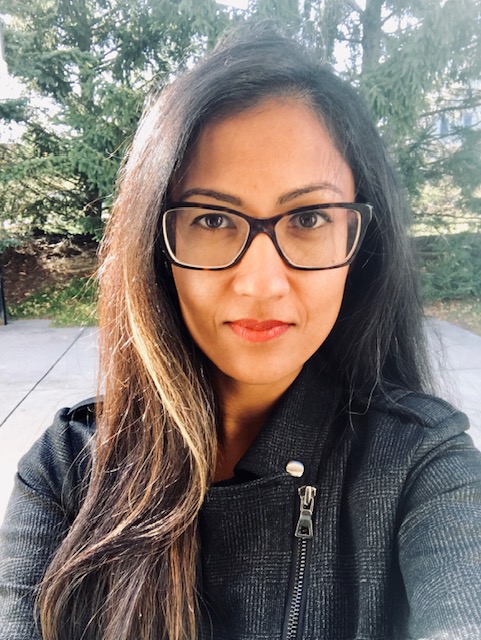
Anita Vijayakumar was raised by her grandparents in India until she (re)met her parents in Chicago at age five. She found her father’s old typewriter and spun her new English words into new universes. Anita obtained a Creative Writing degree and became a psychiatrist. She writes fiction and creative nonfiction, and has publications in River Teeth, HuffPost, The New York Times, and others. She is querying a novel about mental health and identity. Twitter: @AnitaV_K

